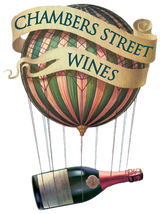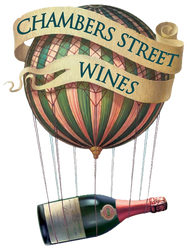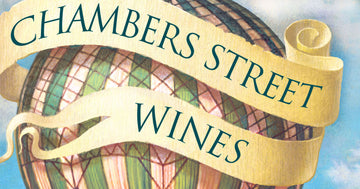The Age of Champagne
5/15/15 -

Stand at the seashore or by the fogbank of a fragrant forest and the aromas of place will seem to be the concentrated essence of sea-spray or pine. This is more than just romantic fancy because the tiny water droplets of a fog can contain supersaturated solutions of aromatic compounds.
Thanks to the research of Prof. Gérard Liger-Belair at the University of Reims in Champagne, the same can now also be said of the world’s finest sparkling wine. The droplets of Champagne carried along by bubbles have a concentration of aromas that is greater than those present in the whole of the wine itself.
As to the formation and the conservation of bubbles, there are several factors that set Champagne apart. Temperature is first. Champagne has some of the coolest cellars in Europe and lower temperatures allow for a greater concentration of C02 in solution during the prise de mousse, the second (in-bottle) fermentation that brings the bubbles and is followed by a lengthy lees-aging.
Champagne is one of the few regions that regularly lees-ages select wines for stretches of years, even decades. During that time, these special bottlings are able to both gain complexity (autolysis of lees) and to retain freshness (anti-oxidative power of CO2). Tasting Champagne that has aged on-site, under pristine conditions of temperature and humidity, is one of the wine world’s great joys.
The Champenois have been granted another path to powerfully complex, refreshingly uplifting, and age-worthy wines. The blending of new vintages with reserve wines is one of the high arts in Champagne and the results can be sublime.
The following wines are some of the most exceptional Champagnes we have ever carried. Beginning with the under-heralded wines of Jacques Beaufort, whose decades long commitment to organic and biodynamic farming has yielded some of the most fine and filigreed late disgorgement Champagnes. Followed by the much loved and buzzed about wines of Raphaël Bérèche and Maison Bérèche with its range of Crus Sélectionnés, lieux-dits bottlings that are standard-bearer expressions of the varying terroirs of the region.
Counterpointed, by the broad, sometimes brooding, Dégorgement Tardif (DT) wines of Jacquesson, helmed by Laurent and Jean-Hervé Chiquet, who are discretely guiding this historic house towards organic viticulture. Ending with the numinous wines of Anselme Selosse, who firmly believes in the vital role of reserve wines in his single-vineyard bottlings. Time has gifted each of these wines with enough vitality and complexity to be both rarefied pleasures now and for years to come.
David Salinas


